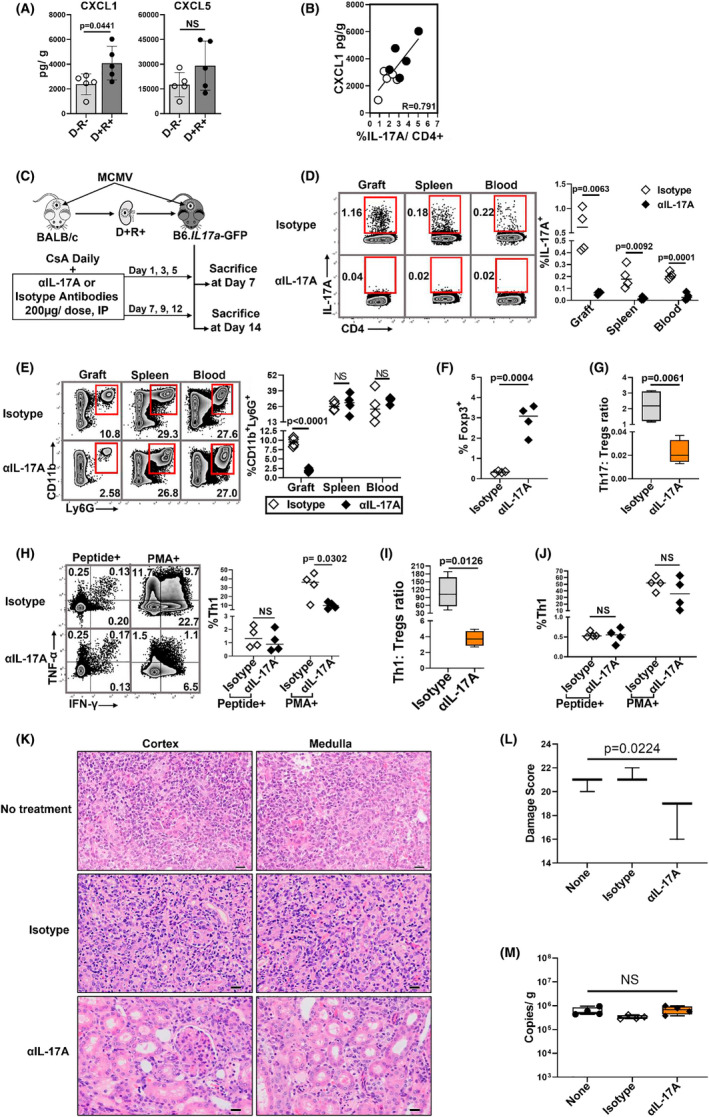FIGURE 6.

IL‐17A inhibition modulates neutrophil, Th1/Treg cell infiltrates and reduces allograft injury. (A) IL‐17A induced neutrophil chemoattractants, CXCL1 and CXCL5, were compared for D−R− and D+R+ allografts. (B) Correlation between intragraft CXCL1 and Th17 cell infiltrates. (C) Study design. D + R+ recipients were treated with αIL‐17A antibodies or isotype control antibodies at 200 μg/dose, intraperitoneally (IP), on indicated days post‐transplantation and sacrificed at day 7 or 14. (D–J) Day 7 post‐transplantation. (D) Representative flow plots and frequencies of Th17 cells in allograft, spleen, and peripheral blood of recipient mice from αIL‐17A treated and isotype control groups. (E) Representative flow plots and frequencies of CD11b+Ly6G+ neutrophils in organs and blood of αIL‐17A and isotype treated transplant recipients. (F) Frequencies of Foxp3+ Tregs in allografts of αIL‐17A and isotype treated mice. (G) Intragraft Th17:Tregs ratio between the groups. (H) Representative flow plots and frequencies of MCMV‐specific and PMA+ intragraft Th1 cell infiltrates between the groups. (I) Ratio of Th1:Tregs in allografts. (J) Frequencies of MCMV‐specific and PMA+ Th1 cells in spleens. (K) Day 14 posttransplant, hematoxylin and eosin (H&E) stained allografts from D+R+ No treatment (none), isotype control and αIL‐17A treated groups (40×). Scale bar 20 μm. (L) Histopathology was scored in blinded fashion using grading scale as shown in Table S3. (M) Viral loads in allografts. All data are represented as mean ± standard deviation (SD) and are analyzed by two‐sided Student's t‐test, Pearson correlation and ANOVA. NS, not significant (p > .05)
